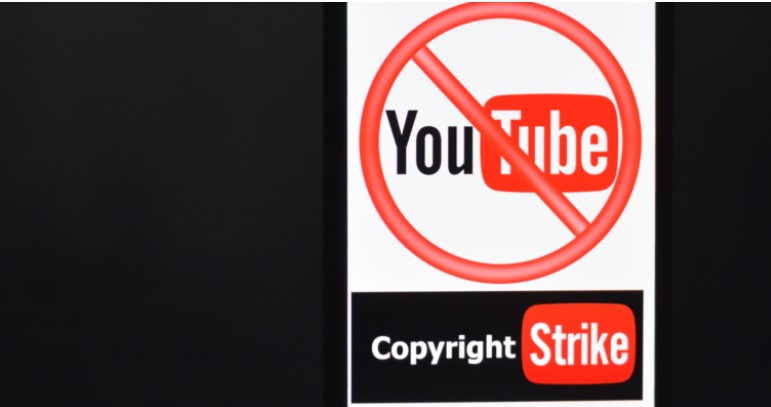YouTube addresses problems with copyright and provides other artistic sources

YouTube addresses problems with copyright and provides other artistic sources
YouTube addresses problems with copyright and provides other artistic sources
YouTube has taken steps to address copyright issues on their platform, which has been a long-standing concern for many content creators and copyright holders.
To address copyright issues, YouTube has implemented a system called Content ID. Content ID scans uploaded videos for copyrighted material and compares them to a database of copyrighted content provided by content owners.
If a match is found, the content owner can choose to either block the video or allow it to stay up and monetize it. This system has helped to reduce the number of copyright infringement cases on the platform.
In addition to addressing copyright issues, YouTube provides a platform for artistic expression and a source of inspiration for creators. It allows artists and musicians to share their work with a wider audience, and it has become a popular platform for emerging artists to gain exposure and build a following.
Additionally, YouTube provides a wealth of educational and instructional content in areas such as music, art, and photography, making it a valuable resource for anyone looking to learn new skills or techniques.
Copyrighted Music & YouTube
Musicians and record companies are the rightful owners of the copyright to their songs and can restrict how others use them.
You must be aware of these rules when posting anything to YouTube since it processes copyright takedown requests in accordance with copyright law.
As you submit a video with copyrighted music, YouTube may receive a Content ID claim, which might result in the video being blocked or rendered ineligible for monetization.
As an alternative, you might get a copyright strike, in which case the content would be taken down.
It’s vital to note that YouTube Shorts operate in a different way, enabling unrestricted use of music from the YouTube Shorts Audio Library.
Most Common Errors Regarding YouTube Copyright
There are several common misconceptions about copyright on YouTube. Here are a few of them:
- If you give credit to the owner of the copyrighted material, you can use it on YouTube without permission. Giving credit is not a substitute for obtaining permission from the copyright owner. Even if you credit the owner, you may still be infringing on their copyright if you use their material without their permission.
- If your use of copyrighted material is non-commercial, it’s automatically fair use. While non-commercial use is a factor that can be considered in a fair use analysis, it’s not the only factor. Fair use is determined on a case-by-case basis and takes into account several factors, including the purpose and character of the use, the nature of the copyrighted work, the amount and substantiality of the portion used, and the effect of the use on the potential market for the copyrighted work.
- If you use copyrighted material for a short period of time, it’s fair use. The amount and substantiality of the portion used is one factor that’s considered in a fair use analysis, but it’s not the only factor. Using even a small portion of a copyrighted work without permission could be infringing on the owner’s rights.
- If you receive a takedown notice, you can just dispute it and the video will stay up. Disputing a takedown notice doesn’t guarantee that your video will stay up. If the copyright owner disputes your dispute, they may file a lawsuit against you, and you could be liable for damages.
It’s important to remember that copyright law can be complex, and the rules and exceptions can vary depending on the specific circumstances. If you’re unsure whether your use of copyrighted material on YouTube is legal, it’s best to consult with an attorney who specializes in copyright law.
Using Audio With The copyright Problems in Videos on YouTube.
To use music in your YouTube videos without copyright issues, you have several options:
- Use music that is in the public domain: Public domain music is music that is not protected by copyright and can be used freely. You can find public domain music on websites such as Musopen and the Free Music Archive.
- Use music that is licensed under a Creative Commons license: Creative Commons is a nonprofit organization that provides free licenses for creators to use and share their work. There are several types of Creative Commons licenses, and some allow for commercial use and modification. Websites such as Jamendo and SoundCloud have a large selection of Creative Commons licensed music.
- Use music that is licensed for use in YouTube videos: There are several music libraries that offer licenses specifically for use in YouTube videos, such as Epidemic Sound, AudioJungle, and PremiumBeat.
- Obtain permission from the copyright owner: If you want to use a specific song or piece of music in your video, you can try contacting the copyright owner to request permission. This can be done through email, social media, or through a licensing agency.
It’s important to remember that using copyrighted music without permission can result in copyright infringement and potentially legal action. If you’re unsure whether your use of music is legal, it’s best to consult with an attorney who specializes in copyright law.
Reference
www.searchenginejournal.com


